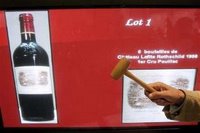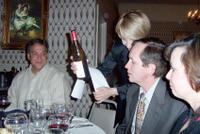
Barely six months ago, I reported under the headline "Worried French put wood in wine, not vice versa" that "The sagging French wine industry often tries to put a good face on its situation despite increased global competition and less than stellar sales. That now will be a little more difficult to accept since the French government plans to allow vintners to flavor their wine with wood shavings, a technique French winemakers have derided as the work of lesser mortals."
Adding wood chips to wine to increase oak flavor has long been practiced by some winemakers in the U.S., Australia and South America. The idea is to avoid the cost and time involved in aging wines in oak barrels.
"The use of wood shavings is already authorized by the European Community and will soon be entered into national regulation," France's Agriculture Ministry said at the time in a formal statement, an effort to "open up the range of authorized winemaking practices."
Wine purists in France predictably objected to the move, although many in the industry were all in favor of it.
Now, France's National Appellations Institute (INAO) has proposed a law to allow the nation's Appellation d'Origine Contrôlée (AOC) regions to ban or limit the use of oak wood chips in at least some wines.
Its logic to ban use of chips across more than 460 AOC regions is concern the practice may damage their quality image. It proposed the move even before the European Union has had a chance to publish new wine rules allowing wood chips to be used.
The INAO position, like the controversial practice that spawned it, was not met with universal support.
“INAO no longer knows what it is doing. It has been completely wrong-footed by European Commission plans to reform the wine sector,” Jean Clavel, head of the Coteaux Languedoc AOC region, told BeverageDaily.com. “Using oak chips in some wines can add a little complexity, and helps them to respond to international demand from consumers who are used to woody aromas in their wines.”
To Dowd's Spirits Notebook latest entry.
To Dowd's Wine Notebook latest entry.
To Dowd's Brews Notebook latest entry.
Back to Dowd On Drinks home page.




